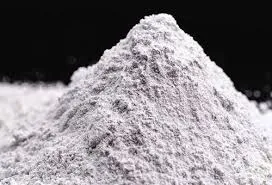
Nov . 04, 2024 17:01 Back to list
Exploring the Applications and Benefits of Hydroxypropyl Methyl Cellulose in Various Industries
Hydroxypropyl Methylcellulose An Overview
Hydroxypropyl methylcellulose (HPMC) is a versatile polymer that has become increasingly important in various industries, including pharmaceuticals, food, construction, and personal care. This semi-synthetic derivative of cellulose, which is derived from natural cellulose through a process of etherification, possesses unique properties that make it suitable for a wide range of applications.
Structure and Properties
HPMC is produced by modifying cellulose, a natural polymer found in plant cell walls. The modification involves introducing hydroxypropyl and methyl groups into the cellulose structure. This alteration not only enhances the solubility of cellulose in water but also improves its thermal stability and film-forming capabilities. The degree of substitution—referring to how many hydroxyl groups are replaced by hydroxypropyl and methyl groups—can be adjusted during production to tailor its properties for specific applications.
This compound is usually found in a white to off-white powder form, and it is odorless and tasteless. When mixed with water, HPMC swells and forms a gel-like substance that exhibits excellent adhesion, encapsulation, and thickening properties. These characteristics make HPMC a valuable ingredient in many formulations.
Applications in Pharmaceuticals
In the pharmaceutical industry, HPMC is widely used as a binder, filler, and coating agent in tablet and capsule formulations. Its ability to form films allows it to be used for enteric coating, which protects medications from the acidic environment of the stomach and ensures that they are released in the intestine. Additionally, HPMC serves as a stabilizer and thickener in liquid formulations like syrups and suspensions, improving the consistency and stability of these products.
Another significant application of HPMC in pharmaceuticals is in controlled-release formulations. The hydrophilic nature of HPMC allows for the gradual release of drugs over time, which can enhance therapeutic efficacy and improve patient compliance by reducing the frequency of dosing.
hydroxypropyl methyl

Role in the Food Industry
In the food sector, HPMC acts as a thickener, emulsifier, and stabilizer. It is often used in gluten-free products to improve texture and moisture retention. The gelling and thickening properties of HPMC help in creating smooth, palatable foods that are appealing to consumers. Additionally, it is utilized in low-fat and reduced-calorie food products to mimic the mouthfeel of fats without adding extra calories.
HPMC is also recognized as a food additive with the E number E464, deemed safe for consumption by regulatory authorities such as the FDA and the European Food Safety Authority (EFSA). As consumers become more health-conscious, the demand for clean-label ingredients like HPMC is on the rise, further driving its use in food formulations.
Applications in Construction and Personal Care
In construction, HPMC is a critical component in cement-based products such as tile adhesives and plasters. Its water-retention properties improve the workability and adhesion of these materials, making it easier to apply and ensuring a strong bond as the products cure.
In personal care products, HPMC is used as a thickening agent in lotions, creams, and gels. It enhances the viscosity and stability of formulations, contributing to a smoother application experience. Additionally, its film-forming properties help create a protective barrier on the skin, which can be particularly advantageous in cosmetic and skin care formulations.
Conclusion
Hydroxypropyl methylcellulose is a multifunctional polymer that plays a crucial role in various industries. Its unique properties allow it to serve as a binder, thickener, stabilizer, and film-forming agent, making it indispensable in pharmaceuticals, food, construction, and personal care. As industries continue to evolve and seek innovative formulations, the significance of HPMC is likely to grow, reflecting the ongoing demand for versatile and effective materials.
-
Versatile Hpmc Uses in Different Industries
NewsJun.19,2025
-
Redispersible Powder's Role in Enhancing Durability of Construction Products
NewsJun.19,2025
-
Hydroxyethyl Cellulose Applications Driving Green Industrial Processes
NewsJun.19,2025
-
Exploring Different Redispersible Polymer Powder
NewsJun.19,2025
-
Choosing the Right Mortar Bonding Agent
NewsJun.19,2025
-
Applications and Significance of China Hpmc in Modern Industries
NewsJun.19,2025







